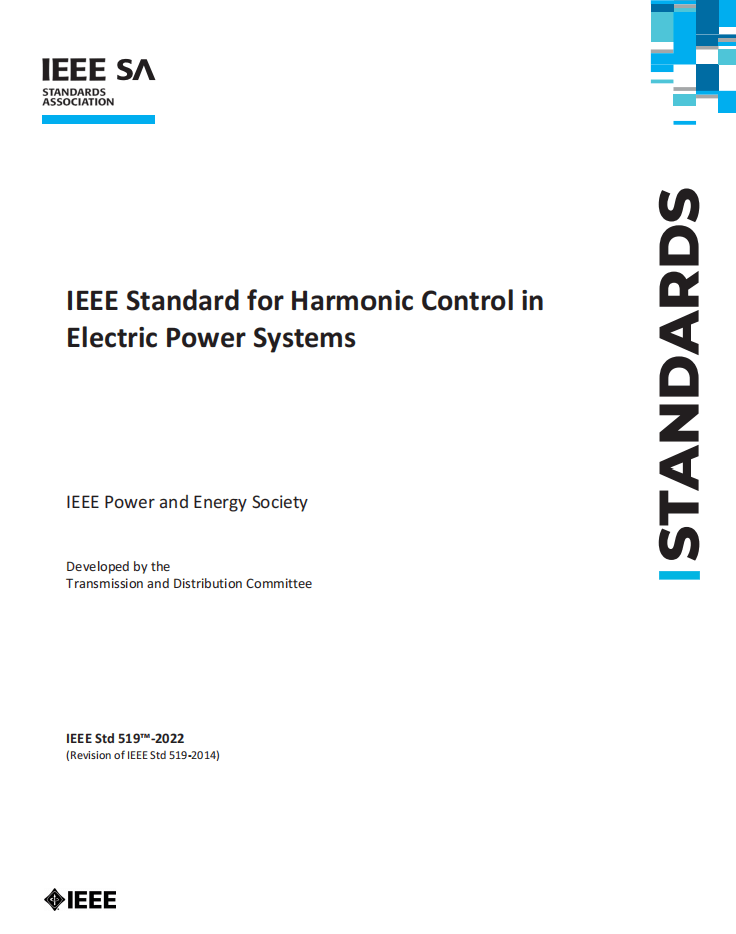Table of Contents
Understanding IEEE 519 Harmonic Standard: A Comprehensive Guide
IEEE 519-2022, titled “Harmonic Control in Electric Power Systems,” is a vital standard that sets targets for electrical system design to mitigate harmonic distortion. Here’s what you need to know and where to start:
Overview
The IEEE 519-2014 standard defines voltage and current harmonic distortion standards in power system design. The standard describes the voltage and current waveforms that may exist throughout the system and sets waveform distortion goals for system designers. You can start with the following resources to learn more:
IEEE 519-2014 Standard: Detailed requirements and recommended practices for harmonic control.
IEEE 519-2014 standard: introduces new measurement methods and statistical evaluation techniques.
IEEE 519-2022 standard: provides a detailed description of harmonic control in power systems, including linear loads and nonlinear loads.
IEEE 519-2022 outlines targets for electrical system design, covering both linear and nonlinear loads. It describes voltage and current waveforms, specifies distortion goals, and offers guidance on source-load interface.

IEEE 519-2022 Standard for Harmonic Control in Electric Power Systems
IEEE 519-2022 establishes goals for the design of electrical systems that include linear loads and nonlinear loads. The standard describes the voltage and current waveforms that exist throughout the system, specifies waveform distortion goals for the system designer, and details the interface between sources and loads. The voltage and current distortion limits in IEEE 519-2022 apply at the user point of common coupling (PCC) to overall installation containing harmonics.
- Linear loads: Electrical loads that do not produce harmonic distortion (e.g., incandescent lamp, motors, and transformers).
- Nonlinear loads: Electrical loads that produce harmonic distortion (e.g., fluorescent lamp, PC and TV, and printers).
- Point of common coupling (PCC): The point on a public electrical power system that is connects to the utility’s electric system, such as the electric power revenue meter or premises service transformer. The PCC is a point located upstream of the considered installation.
- Harmonics (harmonic components): Voltages or currents that are integer multiples of the fundamental power frequency, produced by the action of non-linear loads like rectifiers, discharge lighting, or saturated magnetic devices. IEEE 519-2022 defines harmonics as components of order greater than one of the Fourier series of a periodic quantity; for example, in a 60 Hz system, the harmonic order 3, also known as the “third harmonic,” is 180 Hz.”
Harmonics can cause two main problems—overheating and unwanted current—that can lead to disoperation of equipment, such as disturbances in telephone lines and communication networks. Specifically, harmonics can cause distortion of the supply voltage, equipment overheating, nuisance tripping of circuit breakers, and misfiring of variable speed drives. For this, IEEE 519-2022 specifies harmonic control.
What is the Purpose of Harmonic Voltage Distortion Limits?
Harmonic voltage distortion limits are provided to reduce the potential adverse effects on user and system equipment. IEEE 519-2022 specifies that maintaining harmonic voltages below objectionable levels necessitates the following:
- Users limit their harmonic current emissions to reasonable values. Specifically, users should not add equipment that affects the impedance characteristic in a way that could increase voltage distortion, producing excessive voltage harmonic distortions.
- Supply system owners or operators should control the system impedance characteristics to decrease voltage distortion when necessary.Read more at the ANSI Blog: IEEE 519-2022: Harmonic Control In Electric Power Systems https://blog.ansi.org/?p=170685
Conclusion
Understanding IEEE 519 is essential for ensuring electrical systems operate efficiently and safely, mitigating the impact of harmonics on equipment and networks.
Start by familiarizing yourself with key definitions and voltage distortion limits outlined in the standard. Implementing strategies to control harmonic distortion will help maintain system reliability and protect sensitive equipment.
